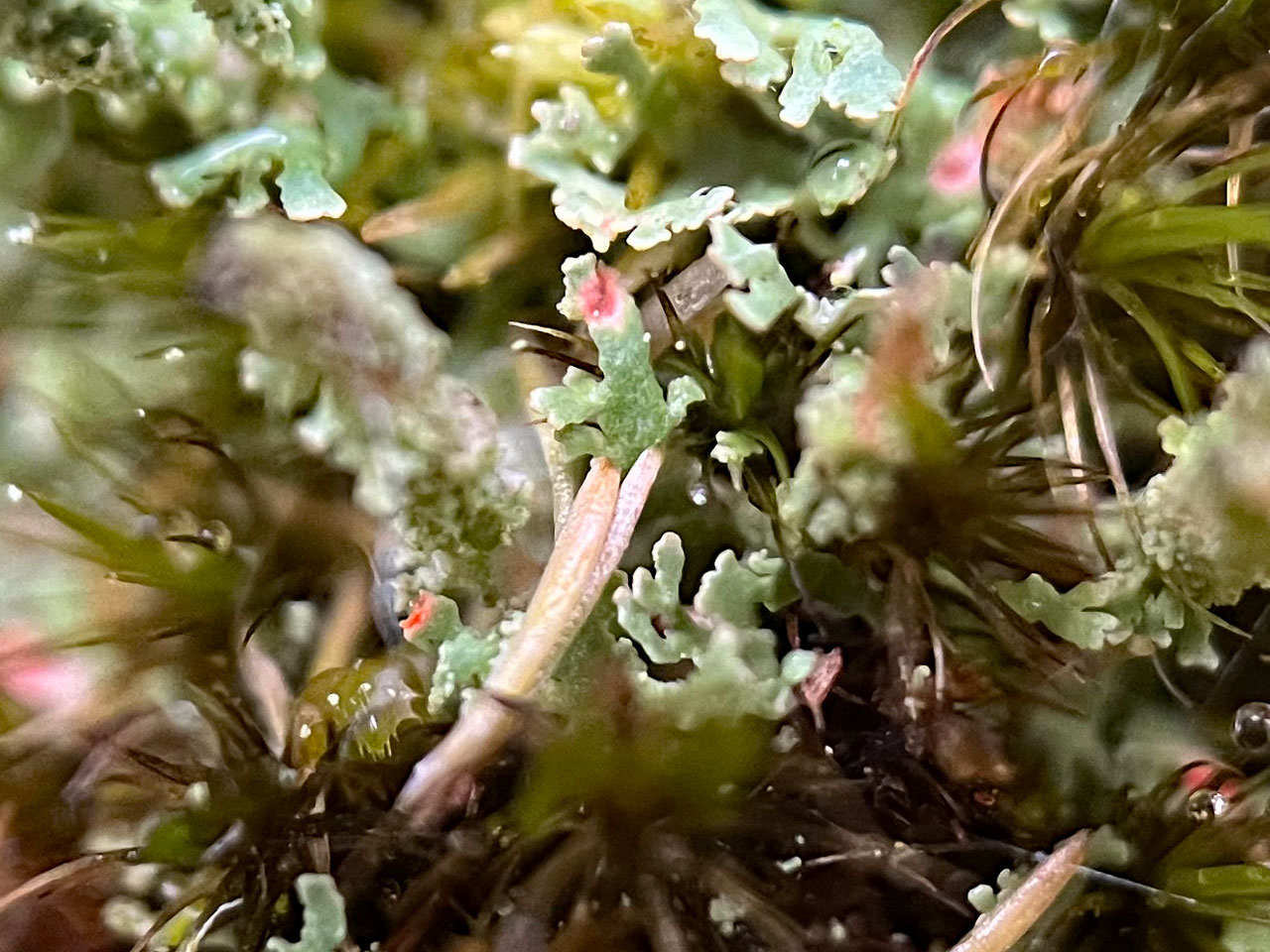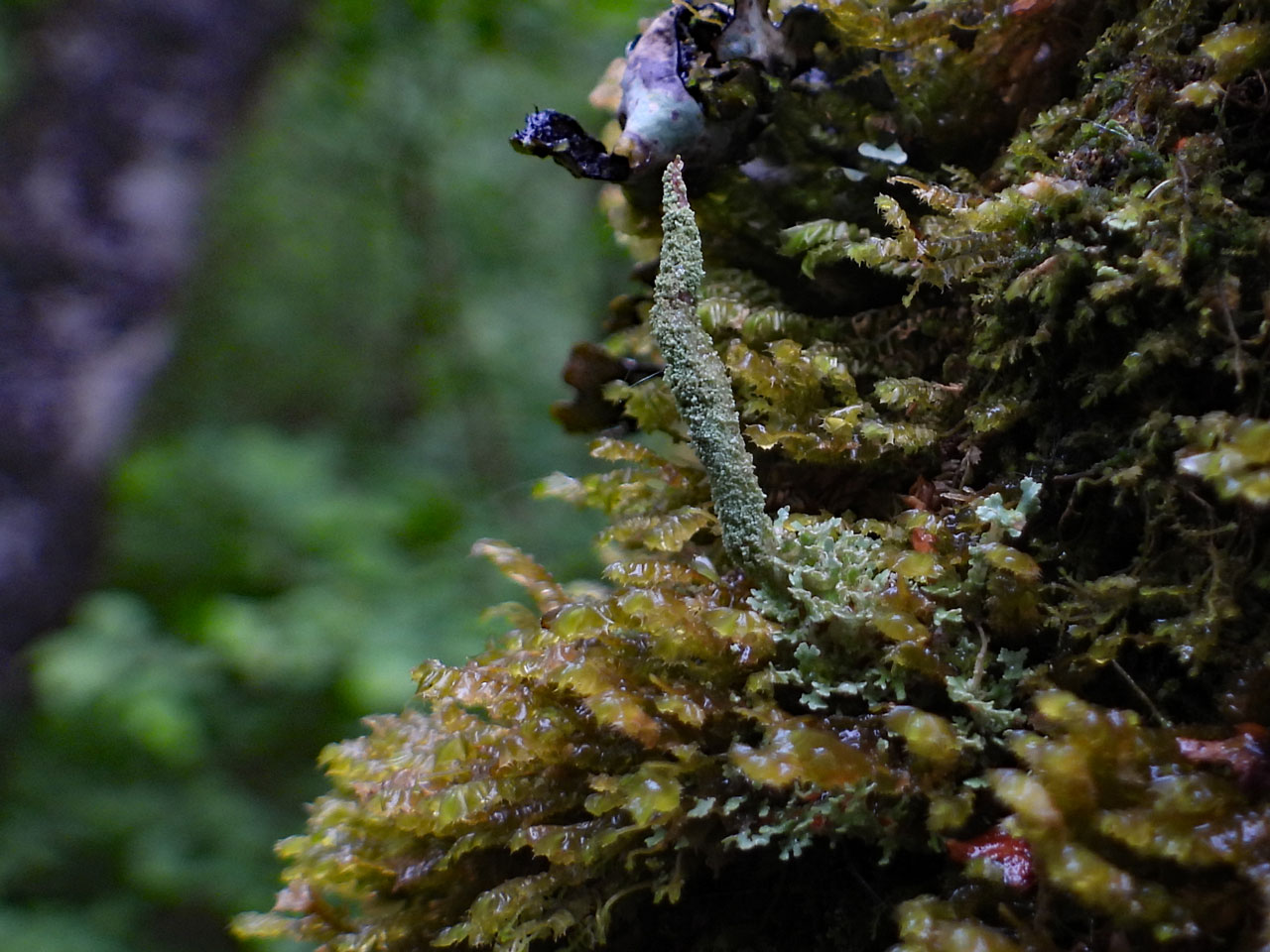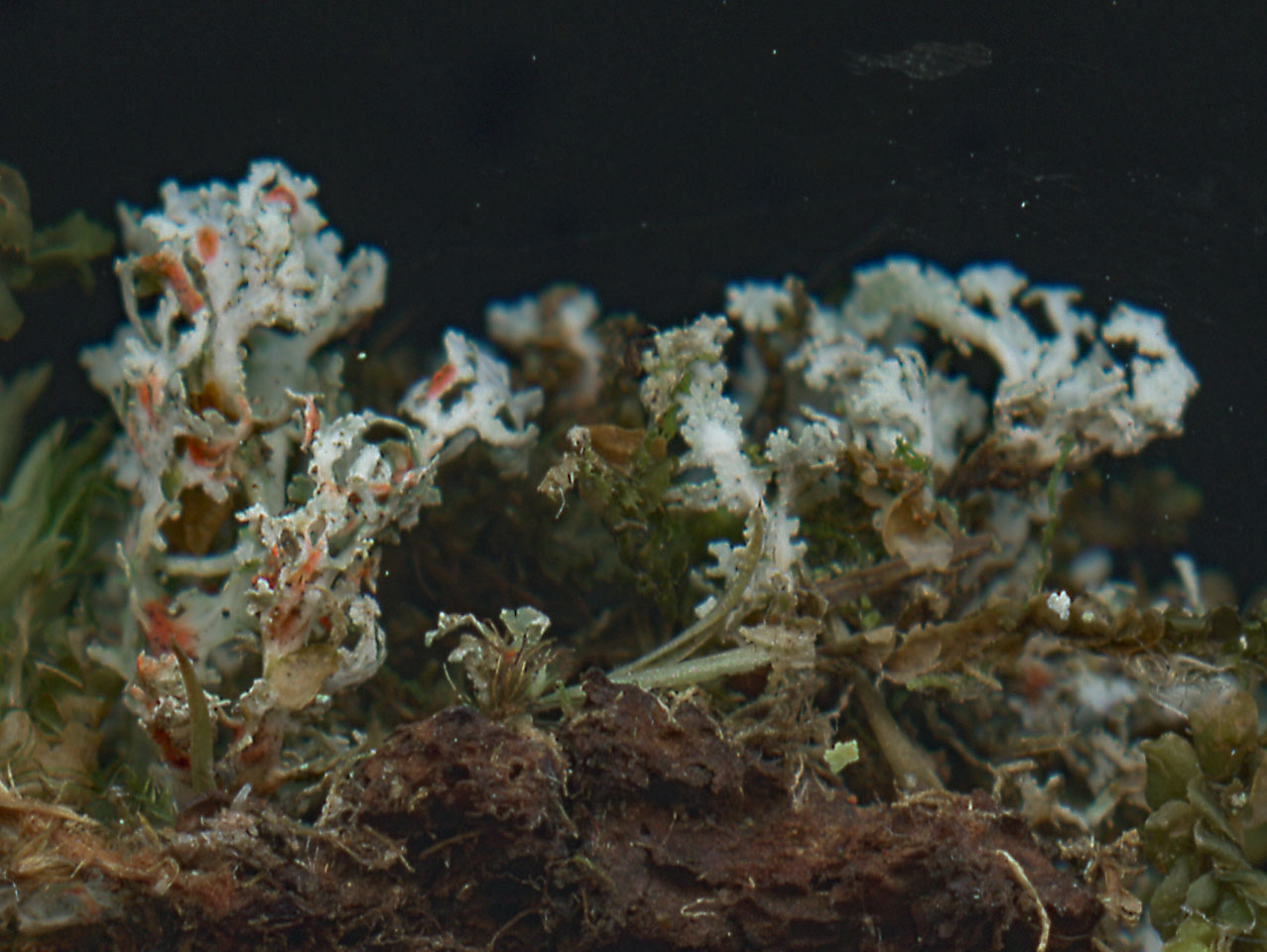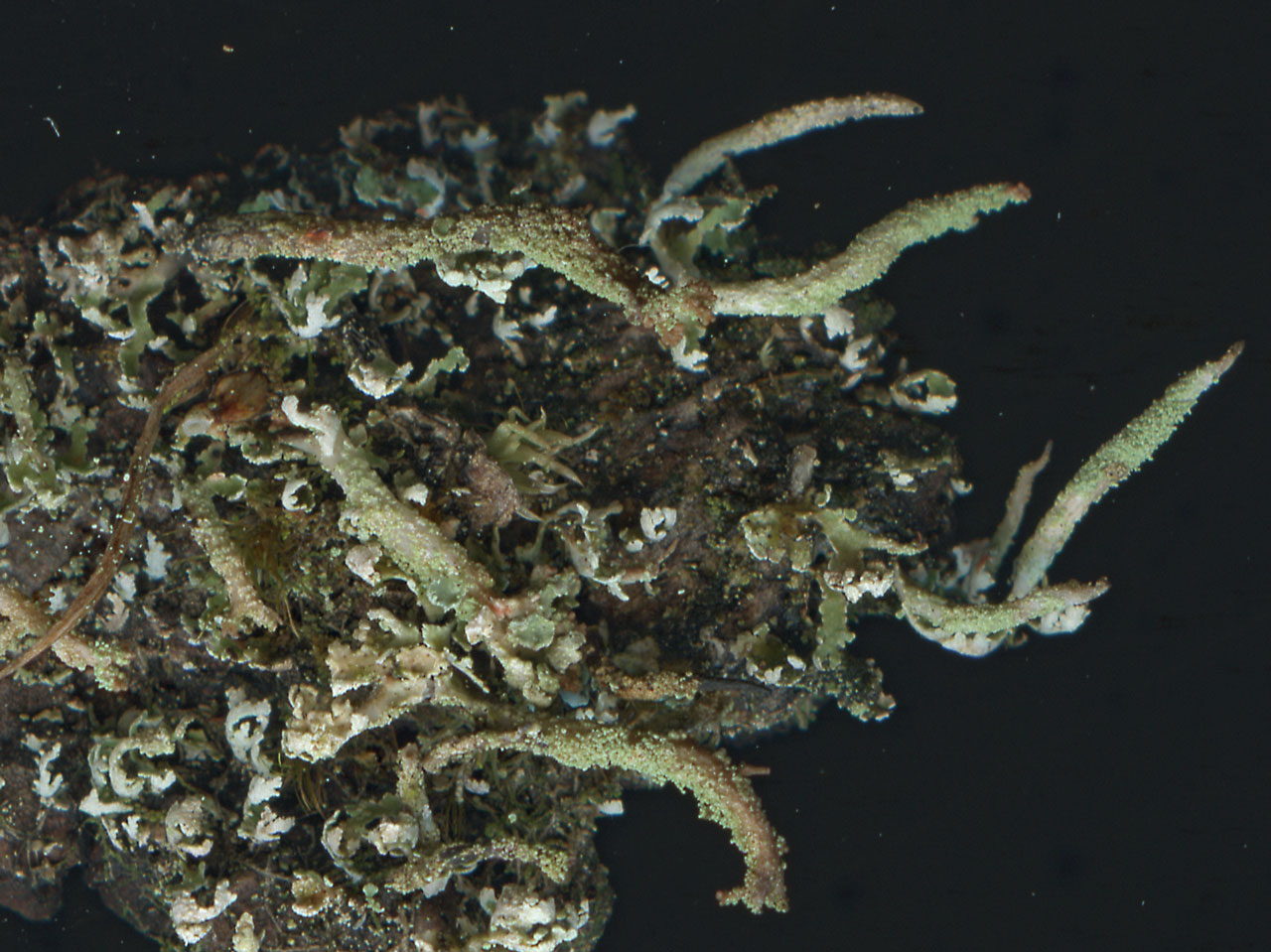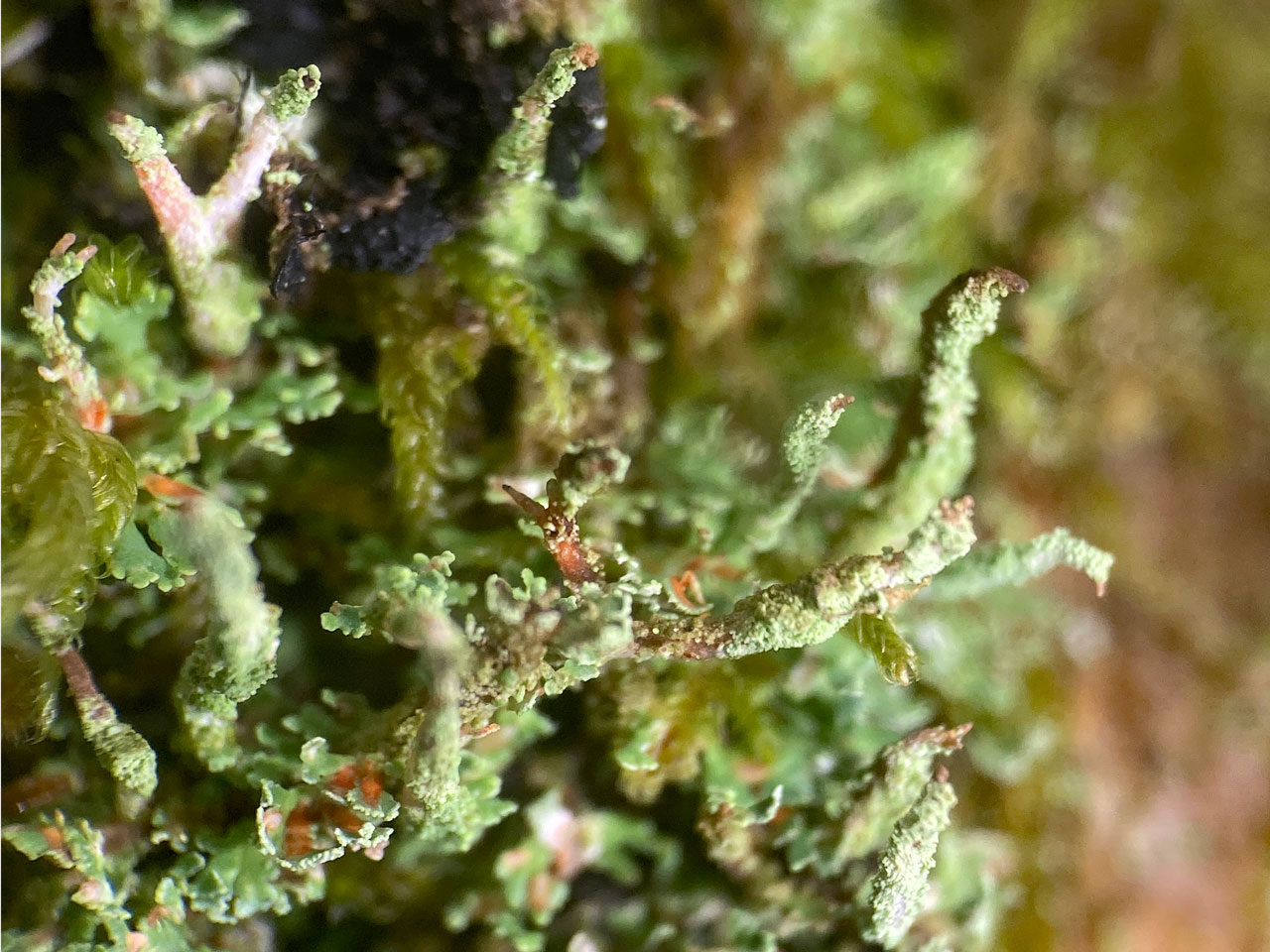A difficult to spot small Cladonia of humid oceanic woodlands, found on acid bark, especially on old Birch trees. The podetia are coarsely sorediate and without cups, like a poorly developed Cladonia polydactyla or Cladonia coniocraea, but with highly dissected basal squamules and negative spot test and weak but distinct UV+ pale blue fluorescence. The basal squamules are similar to those of Cladonia squamosa, but this has different spot tests (K+ yellow or bright white UV+). The most distinctive feature, however, is red staining in the medulla, where the squamules have been damaged. This has been described as due to mite infection, but field observations suggests it is a response by the medulla of C. rubrotincta to any sort of damage.
Podetia up to 10(–15) mm tall, up to 1 mm wide, pale green, often with red spots, slender, subulate, straight or curved and often twisted at the tip, unbranched or rarely with one or two branches, ascyphose or more rarely with a narrow scyphus (up to 1 mm wide), farinosely sorediate in upper part, often corticate towards the base, sometimes with a small number of squamules in lower half, often becoming eroded and showing the white or red-spotted stereome. Basal squamules forming loose cushions, with squamules up to 4 mm long, up to 2.5 mm wide, deeply incised to laciniate, often involute, often with farinose soredia on the underside near the tips, pale green on the upper side, white on the underside, often with red spots. Apothecia rare, up to 0.4 mm wide, pale brown. Pycnidia infrequent, on tips of podetia, indistinctly sessile to shortly stalked, variable, mostly doliiform or cylindrical, brown, with hyaline gelly. Thallus C–, K–, KC–, Pd–, UV+ bluish (weak) (barbatic acid (major) and 4-O-demethylbarbatic acid (minor); rhodocladonic acid and demethyl-rhodocladonic acid in the red spots).
Like a small cupless Cladonia polydactyla or Cladonia coniocraea, but thalli with finely divided basal squamules, often with a reddish medulla and blemished with minute (×20 lens), scattered, superficial red spots, K+ purple, resulting from damage to the medulla. Apothecia absent and pycnidia rare in British populations.
It is suggested that the red spotting, a characteristic of this species, is a reaction of this lichen to infestation by mites (probably Carabodes marginatus), but it appears to be a response to any damage to the medulla. Cladonia rubrotincta was originally included within Cladonia norvegica, but Vtípilová et al (2025) showed that specimens of Cladonia norvegica with red spots were actually a separate but closely related species which they named Cladonia rubrotincta. True C. norvegica may occur in Britain and should be looked out for. It lacks the red spots and the podetia are significantly taller, ranging from 1–3(4) cm in height and are less twisted but is otherwise similar.
On mossy rocks and trunks of old trees, especially Birch, in old oceanic woodland; rare or overlooked.

Somerset (Exmoor), Wales (Cardigan, Snowdonia), Scotland (Kintyre to W. Ross).
Mainly recorded from good quality humid oceanic woods.
Britain: Notable
Pino-Bodas, R., Sanderson, N., Cannon, P., Aptroot, A., Coppins, B., Orange, A. & Simkin, J. (2021). Lecanorales, Cladoniaceae: including the genera Cladonia, Pilophorus and Pycnothelia. Revisions of British and Irish Lichens 19: 1-45. Link
Vtípilová, V., Timdal, E., Stodůlková, E., Semerád, J., Resl, P. and Steinová, J. (2025) Cladonia rubrotincta, a new species distinct from C. norvegica. Lichenologist First View: 1–13. Link
Text by N A Sanderson, based Pino-Bodas et al (2021) & Vtípilová et al (2025)

